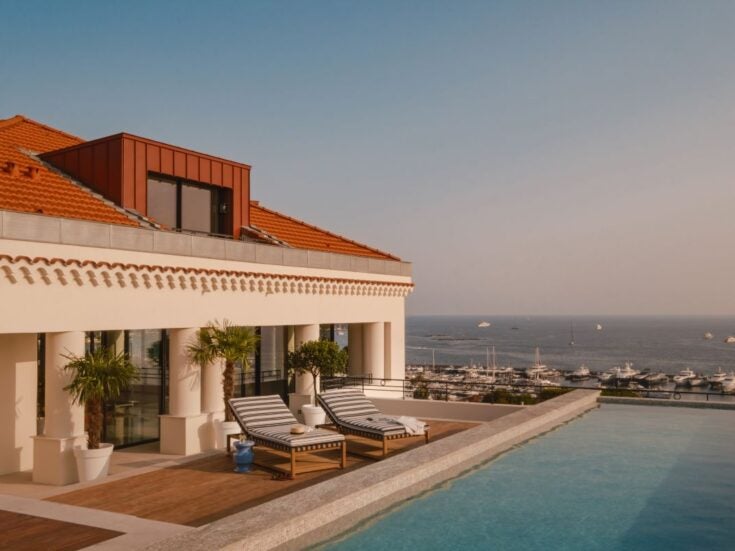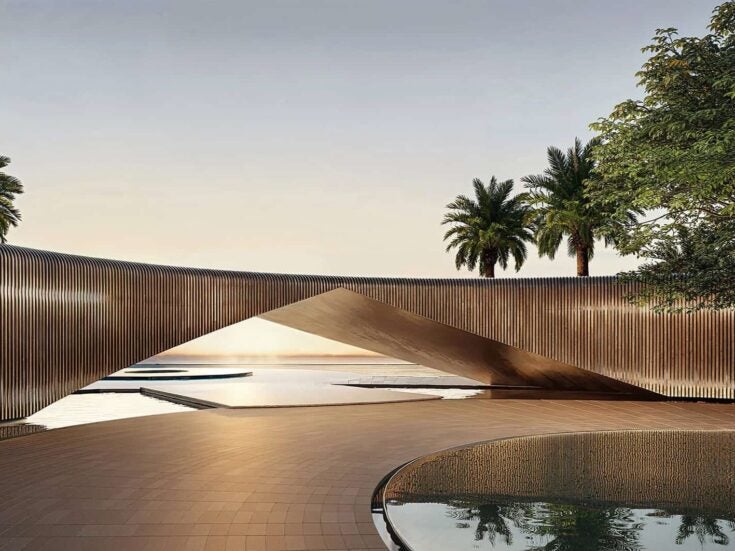
Space on the ground in Manhattan is in desperately short supply, but luckily for developers there’s plenty of prime air up above it to flog, says Elizabeth Wolff.
Last March, a few high-net-worth Italian businessmen, rather than each buying a New York City apartment, invested in a charming four-storey Soho landmark for $10 million. When their $2 million renovations are complete they will have a snazzy storefront, three ‘floor-thru’ condos worth as much as $4 million and one state-of-the-art penthouse duplex built on top. Flipping the new addition alone will cover the cost of the entire building and construction. And that’s exactly why they picked their Greene Street gem: the 19th-century structure, in one of the city’s wealthiest neighbourhoods, had used only two-thirds of its buildable square feet.
As the world elite pounces on Manhattan’s $2 million pieds-à-terre and trophy homes for as much as $50 million, many are taking the hint from the city’s biggest developers and joining the Big Apple’s last great real-estate race: the mad dash for air rights. Buying air, or the unused development rights of a property, may not be obvious — a magazine voted the $430-per-square-foot, record-breaking air-rights purchase by the mega-developers Arthur and William Zeckendorf one of 2005’s ‘101 dumbest moments in business’ — but since Manhattan’s values started to increase in the mid-1990s the air around and above the city’s buildings has become perhaps the best indicator of the land’s worth.
In Tribeca, another trendy downtown neighbourhood, a cast-iron former printing plant is on sale for $22 million. While each of its five floors could likely fetch a fifth of the price tag, its hidden value is that the lot’s zoning permits it to double in size by building up. With the additional modern five-floor attachment, potential buyers are getting the potential building at $738 per square foot where the average is twice that.
‘Wealthy investors are much more involved,’ explained Slater Traaen, a senior associate at boutique firm Conquest Advisors, which facilitated the Italians’ Greene Street project and also commissioned expansion renderings to aid in the sale of the vacant printing press. ‘They don’t want to buy a boring Upper East Side townhouse and they don’t want to buy a multi-unit rental and sit on it.’
On average, experts have valued Manhattan air at about 60 per cent of its comparable land value. Still, all air is not created equal. Recognising its priceless value, the Zeckendorf brothers — best known for redefining uptown opulence at 15 Central Park West — spent a decade slurping up $37 million-worth of air rights so they could build a penthouse with Central Park views. A 35-storey condo tower is now being built on the site of three former tenements on 60th Street, off Park Avenue. Expect the three top apartments to recoup that ‘dumb’ recording-breaking price of $430 per square foot of air — and then some.
As is the expandable space in Manhattan, the industry of air rights, once described as a ‘three-dimensional chess game’, is finite. Your access to air rights depends on the land you own — or the land you choose to buy. Selling air rights has become fast cash for owners whose land has not been built to its zoning potential. With significant city-wide oversight, building owners can ‘transfer’ their unused air rights to owners of adjacent properties who can then build bigger than previously permitted. Extell was able to build two controversial 32-storey condominiums on either side of Broadway (marketed as multi-million-dollar suburban mansions in the sky) because it struck deals with two blocks of townhouse and low-rise rental owners to buy their air rights for an average of $140 per square foot.
Landmarks, meanwhile, have even more options to sell — and developers who buy near them have more options to develop — because the city allows those structures to sell their air rights to owners across the street or, in the case of the Theatre district, within an allotted zone.
The Century Association sold the air above its Beaux-Arts clubhouse to Aby Rosen for $25 million so that he could build a 54-storey glass office tower down the block on Fifth Avenue; and billionaire Mort Zuckerman combined 50,000 square feet of air rights sold to him by the famed Shubert Theater with a block of assembled low-rises to erect a 39-storey office tower west of Times Square.
But air rights can also be the last nail in the coffin for a waning neighbourhood. By 2010, a 40-storey Diamond Tower is expected to destroy the scruffy street culture of New York’s famed 47th Street Diamond District. Not only did developers maximise the size of its development by demolishing former dingy jewellery storefronts, the new building will also relocate hundreds of street-side vendors to commercial cubicles in the sky.
That developers are fast maximising every square foot of commercial and wealthy residential neighbourhoods has not gone unnoticed. Under billionaire mayor Michael Bloomberg, New York City has become the biggest seller of air rights, hoping to collect billions for its municipal coffers. In 2007, it sold the air over the Port Authority Bus Terminal to a developer who will build a 40-storey office tower. The $500 million price tag will fund the beleaguered transportation hub’s entire rehabilitation. Meanwhile, the city is preparing to sell the Housing Department’s 30.5 million square feet of air rights — the equivalent of eleven Empire State buildings — as well as the unused development rights to NYC’s 1,100 schools and 228 fire houses.
The inevitability of the expansion upward has many New Yorkers fearing for their city’s future. If every penthouse can cover the cost of its construction, developers are finding it more economical to demolish and build anew, turning New York, in a matter of decades, into a sea of glass towers. Will it be Tokyo, maxed out at maximum height? Or can New York City strike a balance between what is standing — as European cities take pains to preserve their architectural history — and the empty air above?
Even Slater Traaen, who is juggling 10 international clients, admits they would rather tear down than tack on. ‘All my clients want to develop massive projects in fashionable neighbourhoods but the available land just doesn’t exist,’ he explains. ‘There’s just not enough inventory, so I walk the streets, noting buildings that might have air to spare, a property that could give a buyer those extra few floors to develop — anything.’
On the Upper East Side, the 20th century’s home to the Establishment, a war is being waged against developers by preservationists and well-heeled residents who want to extend the neighbourhood’s historic district (already covering Fifth Avenue, Madison and Park) to include a dozen blocks on Lexington Avenue. The high-profile campaign to preserve the neighbourhood’s de facto ‘Main Street’ aims to protect both its unique architecture and its air space. Similar to Soho and Tribeca’s landmark districts, historic districts in NYC require increased oversight when it comes to development.
As the ladies who lunch await the Landmark Committee’s ruling, a developer knocked down a beloved 19th-century mansion on Lexington to make way for a 16-storey glass sheath. Another patient developer is slowly buying up commercial townhouses just eight blocks north, collecting the air as it becomes available. The vultures are no longer looking down; they’re looking up.






